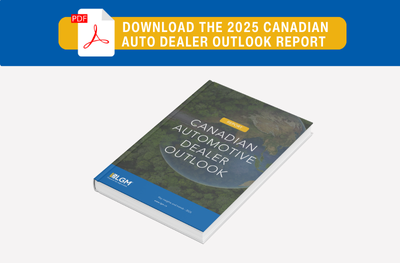Many industries have been impacted by the COVID-19 pandemic, but perhaps no industry has faced more adversity than automotive. From successive restrictions and lockdowns to a massive disruption in the supply chain resulting in a chip shortage, and more recently, a drastic rise in factory orders, the industry has had many hurdles to overcome. Now more than ever, it’s crucial for dealerships and Financial Services Offices to adapt their strategies so they can better service their customers.
From in-person conversations to digital – a change in consumer preference.
Up until early 2020, the way consumers purchased a vehicle had been the same for decades. They visited a dealership and were immediately serviced by a sales representative, who could answer any questions they might have related to their future car. Following a successful sale, consumers would then transition to the business office, where they would fill out their credit application and discuss finance and insurance (F&I) products with the Financial Services Manager.
In this traditional model, Financial Service Managers were able to connect with the consumer at a logical, predictable point in the process. They had brochures and other tools around to support product presentations and they had the time and environment required to properly explain the products and answer any questions the customer might have.
While this process has proven very successful through the years, it does require customers to physically come to the dealership to purchase – something that is impossible in the event of a pandemic restriction.
While customers were already leaning towards a more digital experience. The last two years have made a more digital approach to car buying a mainstay. Furthermore, consumers have increasingly become accustomed to slick ecommerce experiences and have come to expect it across all industries. They want to research, configure, choose and order their vehicle online from the comfort of their home. This leaves dealerships facing new challenges as they try to adapt to these new expectations.
Factory orders – a change in supply.
Factory orders are not something that was talked about much until very recently, and there are many reasons for that. Most orders in the past would be based on the inventory dealerships had readily available to customers. This allowed customers to walk into the dealership on any given day and leave with their new vehicle that same day.
Factory orders, however, fall somewhat out of this well-rounded process. The sales part of the journey would happen right away, but anything related to protection products would wait until closer to delivery, if even possible at all. In most cases, factory orders would be put to the side and F&I Managers would neglect the opportunity to present protection products until too late in the process – impacting the consumer’s ability to budget and purchase F&I products.
However, the reality in dealerships has drastically changed in the past months, and factory orders have gone from being the exception to being the rule. Factory orders now make up more than 90% of all sales and represent a significant challenge to old processes and revenue opportunities.
How can dealerships incorporate F&I into the factory order process?
Until supply catches up to demand, factory orders aren’t going away anytime soon. With consumer experience and F&I revenue being core to their success, smart dealerships are reimagining their processes.
Join us on March 10 at 1pm EST/ 10am PST as we share new best practices on how best to service the customer and position F&I in the age of factory orders.
Our team shares what is happening in the market
Our field sales team recently sat down to discuss what they are seeing at dealerships across the country. If you are curious to learn what dealers need to focus on now, watch the fireside chat conservation below.


